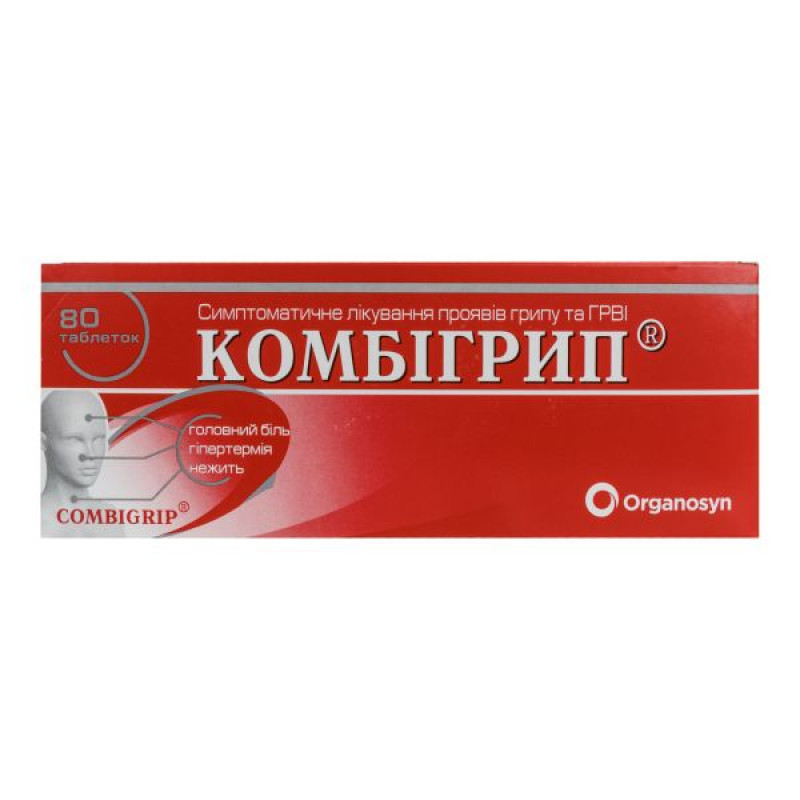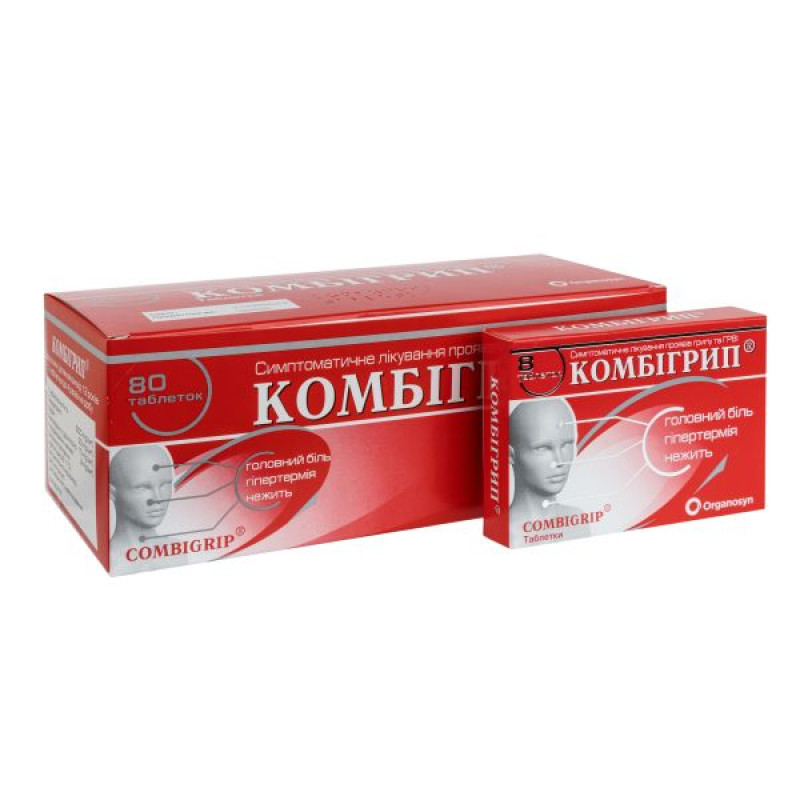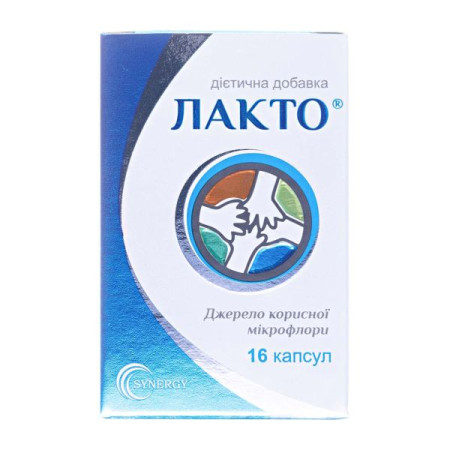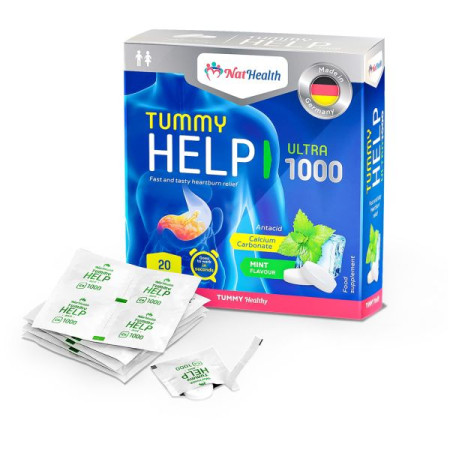Combigrip tablets No. 80
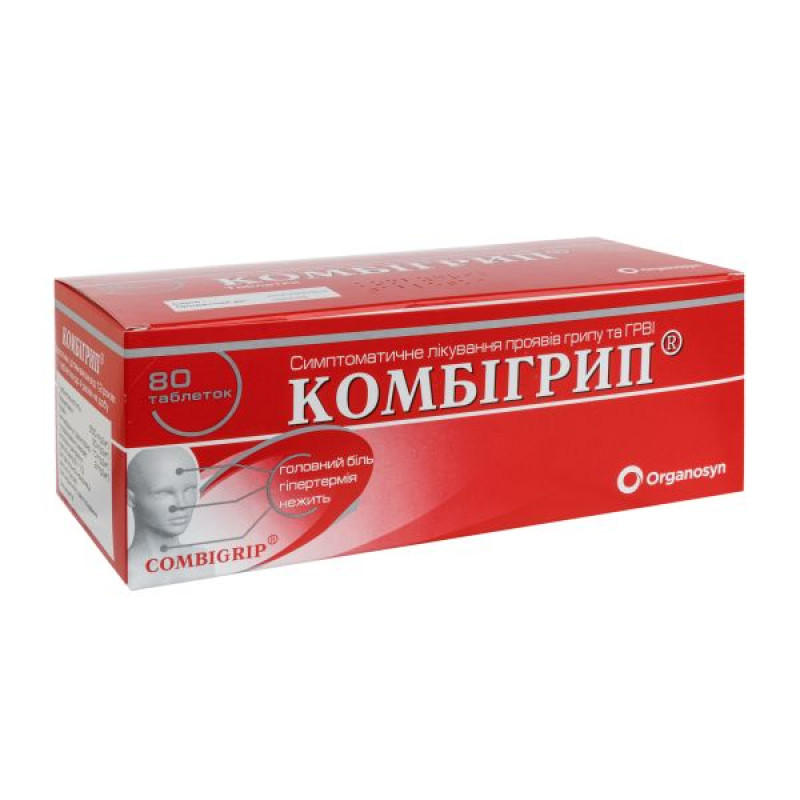
Instructions for Combigrip tablets No. 80
Composition
active ingredients: 1 tablet contains paracetamol 500 mg, caffeine 30 mg, phenylephrine hydrochloride 10 mg, chlorpheniramine maleate 2 mg;
excipients: corn starch, microcrystalline cellulose, calcium hydrogen phosphate, povidone, magnesium stearate, talc, sodium starch glycolate (type A), sunset yellow (E 110), croscarmellose sodium.
Dosage form
Pills.
Main physicochemical properties: uncoated tablets, orange or light orange with specks, oblong oval shape, with a score, with imprints of "S" and "L" on the side where the score is.
Pharmacotherapeutic group
Analgesics and antipyretics. Paracetamol, combinations without psycholeptics.
ATX code N02B E51.
Pharmacological properties
Pharmacodynamics
The pharmacological effect is due to the action of all components of the drug.
Paracetamol acts as an analgesic and antipyretic. The analgesic and antipyretic effects of paracetamol are associated with the drug's effect on the thermoregulatory center in the hypothalamus and its ability to inhibit prostaglandin synthesis.
Phenylephrine hydrochloride acts as a vasoconstrictor, reduces swelling of the nasal mucosa and paranasal sinuses, and the severity of exudative manifestations.
Chlorpheniramine maleate has an antiallergic effect, relieves tearing and itching in the nose.
Caffeine has a stimulating effect on the central nervous system, mainly on the cerebral cortex, respiratory and vasomotor centers, increases mental and physical performance, reduces drowsiness, fatigue, and weakens the effect of drugs that depress the central nervous system.
Pharmacokinetics
Paracetamol is rapidly absorbed from the gastrointestinal tract, the maximum concentration in the blood plasma is reached after 1 hour. It binds to plasma proteins to a small extent (in therapeutic doses - 28-50%). The half-life from the blood plasma is 1-4 hours. The duration of the analgesic effect of the drug is 4-6 hours, the antipyretic effect is 6-8 hours. The main route of elimination is transformation in the liver with the formation of paracetamol glucuronide and sulfate.
In adults, the main metabolite of paracetamol (90%) is a compound with glucuronic acid, in children - with sulfate. It is excreted by the kidneys, mainly in the form of conjugation products, less than 5% is excreted unchanged.
Caffeine and its water-soluble salts are rapidly absorbed in the intestines (including the colon). The half-life from blood plasma is about 5-10 hours. The main part is demethylated and oxidized. About 10% is excreted by the kidneys in unchanged form.
Phenylephrine hydrochloride has low bioavailability due to uneven absorption and the influence of monoamine oxidase in the gastrointestinal tract and liver during the "first pass". It is excreted by the kidneys in the form of metabolites. Acidification of urine accelerates excretion from the body.
Chlorpheniramine maleate is slowly absorbed from the gastrointestinal tract, the maximum concentration in the blood plasma is reached after 2.5-6 hours, 70% of it is bound to blood plasma proteins. Bioavailability is from 25% to 50% of the dose taken. Chlorpheniramine undergoes metabolism during the "first pass" in the liver, is largely metabolized in the liver with the formation of metabolites desmethyl- and didesmethylchlorpheniramine. Chlorpheniramine is distributed throughout the body, passes through the blood-brain barrier. Metabolites and the drug are excreted mainly in the urine unchanged within 4-6 hours. Excretion depends on the pH of the urine and the degree of excretion. Children have a faster and more extensive absorption, excretion and half-life.
Indication
Treatment of symptoms of influenza and acute respiratory viral infections (hyperthermia, headache, runny nose, cough) in adults and children aged 12 years and older.
Contraindication
Hypersensitivity to any component of the drug, other xanthine derivatives (theophylline, theobromine), opioids, antihistamines, sympathomimetic amines. Severe cardiovascular diseases, including uncompensated heart failure, conduction disorders, arrhythmias, severe atherosclerosis, tendency to vasospasm, severe ischemic heart disease; severe arterial hypertension. Severe liver and kidney dysfunction, prostate adenoma with difficulty urinating, bladder neck obstruction. Stenosing gastric and duodenal ulcer, pyloroduodenal obstruction; acute pancreatitis, epilepsy. Blood diseases (including severe anemia, leukopenia), hyperthyroidism, diabetes mellitus, bronchial asthma, angle-closure glaucoma, glucose-6-phosphate dehydrogenase deficiency, alcoholism, increased excitability, sleep disorders, congenital hyperbilirubinemia. Elderly age. Simultaneous use with tricyclic antidepressants, ß-blockers; with MAO inhibitors and for 2 weeks after stopping their use. Contraindicated in patients at risk of respiratory failure.
Interaction with other medicinal products and other types of interactions
Metoclopramide and domperidone increase, and cholestyramine reduces the rate of absorption of paracetamol. When used simultaneously with paracetamol, the following types of interactions may be observed: the elimination of antibiotics from the body may be slowed down; tetracycline increases the risk of anemia and methemoglobinemia caused by paracetamol; antacids and food reduce the absorption of paracetamol. With simultaneous long-term use, the anticoagulant effect of coumarins (e.g., warfarin) is enhanced. Barbiturates reduce the antipyretic activity of paracetamol. Anticonvulsants (phenytoin, barbiturates, carbamazepine), which stimulate microsomal liver enzymes and isoniazid, may increase the hepatotoxicity of paracetamol. When used simultaneously with hepatotoxic drugs, the toxic effect of drugs on the liver increases. Paracetamol reduces the effectiveness of diuretics.
The use of phenylephrine hydrochloride with indomethacin and bromocriptine can cause severe arterial hypertension; with sympathomimetic amines, digoxin and cardiac glycosides increases the risk of arrhythmias and myocardial infarction.
May reduce the effectiveness of ß-blockers and other antihypertensive drugs (reserpine, methyldopa) with an increased risk of arterial hypertension and adverse cardiovascular reactions.
Rauwolfia alkaloids reduce the therapeutic effect of phenylephrine hydrochloride;
α-blockers (phentolamine), phenothiazines, furosemide, and other diuretics prevent vasoconstriction.
Chlorpheniramine maleate enhances the anticholinergic effect of atropine, antispasmodics, central nervous system depressants (tranquilizers, barbiturates), and antiparkinsonian drugs.
Do not use simultaneously with alcohol. Chlorpheniramine maleate, when used simultaneously with alcohol, potentiates the effects of each other.
Simultaneous use with hypnotics, barbiturates, sedatives, neuroleptics, tranquilizers, anesthetics, narcotic analgesics, and alcohol enhances the effect of chlorpheniramine maleate.
Maprotiline (a tetracyclic antidepressant) and other anticholinergic drugs: the anticholinergic effect of these drugs or antihistamines such as chlorpheniramine may be enhanced.
Caffeine, when used simultaneously, enhances the effect of analgesics-antipyretics (improves bioavailability), xanthine derivatives, α- and β-adrenomimetics, psychostimulants, thyroid-stimulating agents, and ergotamine (improves the absorption of ergotamine from the digestive tract).
Cimetidine, hormonal contraceptives, and isoniazid enhance the effects of caffeine.
Caffeine increases the likelihood of liver damage from hepatotoxic drugs.
Caffeine reduces the effect of opioid analgesics, anxiolytics, hypnotics and sedatives, is an antagonist of anesthetics and other drugs that depress the central nervous system, a competitive antagonist of adenosine and ATP drugs; reduces the concentration of lithium in the blood.
Ototoxic and photosensitizing drugs may increase side effects when used simultaneously.
Application features
Do not exceed recommended doses.
Do not use simultaneously with drugs containing paracetamol and other cold remedies; with sedatives, hypnotics. The risk of overdose increases with alcoholic liver disease. During treatment, alcohol consumption should be excluded, as it enhances the sedative effect of chlorpheniramine maleate and the hepatotoxicity of paracetamol.
If the symptoms of the disease do not disappear or the headache becomes constant, you should consult a doctor.
When using the drug, you should avoid excessive consumption of coffee, strong tea, other tonic drinks and medications containing caffeine. This may cause sleep problems, tremors, tension, irritability, and palpitations.
3 should be used with caution in compensated heart failure, patients at risk of seizures, patients with chronic obstructive airway diseases, persistent or chronic cough resulting from smoking or emphysema, when the cough is accompanied by excessive sputum secretion, patients with congenitally prolonged QT interval or in cases of prolonged use of drugs that can prolong the QT interval.
The drug may affect the results of laboratory tests for blood glucose. The use of the drug may cause a positive analytical result in doping control.
Before using the drug, you should consult a doctor if you are using warfarin or similar drugs that have an anticoagulant effect and in patients with impaired kidney and liver function.
Phenylephrine may cause increased heart rate, dizziness, or palpitations; patients should be warned accordingly.
In case of accidental overdose, the patient should immediately consult a doctor, even if his/her well-being has not worsened.
Use during pregnancy or breastfeeding
Do not use during pregnancy or breastfeeding.
Ability to influence reaction speed when driving vehicles or other mechanisms
During treatment, you should avoid driving vehicles, working with mechanisms and other dangerous activities.
Method of administration and doses
Adults and children over 12 years of age – 1 tablet 4 times a day no more often than every 3-4 hours. The drug is taken at least half an hour after meals. Duration of treatment – no more than 5 days.
Children
The drug is prescribed to children over 12 years of age.
Overdose
In case of paracetamol overdose, symptoms develop in the first 24 hours - pallor, nausea, vomiting, anorexia and abdominal pain. The activity of hepatic transaminases increases, the concentration of bilirubin increases and the level of prothrombin decreases. In case of overdose, increased sweating, psychomotor agitation or depression of the central nervous system, dizziness, sleep disturbances, drowsiness, heart rhythm disturbances, tachycardia, extrasystole, tremor, hyperreflexia, convulsions, pancreatitis may be observed. In isolated cases, acute renal failure with acute tubular necrosis, manifested by pain in the lumbar region, hematuria, proteinuria, nephrotoxicity (renal colic, interstitial nephritis, papillary necrosis) has been reported.
The use of 10 g or more of paracetamol by adults and more than 150 mg of paracetamol per kg of body weight by children can lead to hepatocellular necrosis with the development of encephalopathy with impaired consciousness, hepatic coma and death.
The first clinical and biochemical signs of liver damage may appear 12-48 hours after overdose. Glucose metabolism disorders and metabolic acidosis may occur. With prolonged use of high doses, aplastic anemia, pancytopenia, agranulocytosis, neutropenia, leukopenia, thrombocytopenia are possible.
In patients with risk factors (long-term treatment with carbamazepine, phenobarbital, phenytoin, primidone, rifampicin, St. John's wort or other drugs that induce liver enzymes; alcoholism; glutathione cachexia (digestive disorders, cystic fibrosis, HIV infection, starvation, cachexia) the use of 5 g or more of paracetamol can lead to liver damage.
Symptoms of overdose due to the action of phenylephrine and chlorpheniramine maleate: headache, hyperhidrosis, drowsiness, insomnia, behavioral changes, restlessness, irritability, tremor, convulsions, hyperreflexia, dizziness, nausea, vomiting, tachycardia, arrhythmias, extrasystole.
In case of overdose with chlorpheniramine maleate, the state may vary from depressed to excited (restlessness and convulsions). Atropine-like symptoms may be observed, including mydriasis, photophobia, dryness of the skin and mucous membranes, fever, intestinal atony; depression of the central nervous system is accompanied by respiratory disorders and disorders of the cardiovascular system.
In case of caffeine overdose, the following symptoms are observed: dehydration, hyperthermia, tinnitus, epigastric pain, increased frequency of diuresis, extrasystole, tachycardia, rapid breathing, arrhythmia, effects on the central nervous system (dizziness, insomnia, excitement, irritability, psychomotor agitation, state of affect, anxiety, tremor, vomiting, seizures, convulsions, agitation, restlessness, delirium, increased tactile or pain sensitivity).
Treatment of overdose: In case of suspected overdose, the patient should be taken to hospital. Intravenous acetylcysteine is administered within 24 hours after paracetamol ingestion, with the maximum effect being achieved within the first 8 hours after ingestion. Oral methionine may be administered within the first 8 hours after overdose.
Adverse reactions
Immune system disorders: hypersensitivity reactions, including pruritus, rash (erythematous, urticaria), anaphylactic shock, angioedema, erythema multiforme exudative (including Stevens-Johnson syndrome), toxic epidermal necrolysis.
From the side of the central nervous system: psychomotor agitation and disorientation, anxiety, behavioral changes, feelings of fear, anxiety, irritability, sleep disturbances, insomnia, drowsiness, dizziness, confusion, hallucinations, depressive states, tremor, tingling and heaviness in the limbs, tinnitus, headache, in some cases - coma, convulsions, dyskinesia.
Respiratory system: bronchospasm in patients sensitive to aspirin and other NSAIDs.
On the part of the organs of vision: impaired vision and accommodation, mydriasis, increased intraocular pressure, dry eyes.
Gastrointestinal: decreased appetite, nausea, vomiting, dry mouth, hypersalivation, heartburn, discomfort and pain in the epigastrium, exacerbation of peptic ulcer, flatulence, diarrhea, constipation.
On the part of the hepatobiliary system: impaired liver function, increased activity of liver enzymes, usually without the development of jaundice, hepatonecrosis (when using high doses), hepatotoxicity.
On the part of the endocrine system: hypoglycemia, up to hypoglycemic coma.
From the blood and lymphatic system: anemia, including hemolytic anemia, bruising or bleeding; sulfhemoglobinemia and methemoglobinemia (cyanosis, shortness of breath, heart pain).
On the part of the kidneys and urinary system: when using high doses - nephrotoxicity (including papillary necrosis), urination disorders, urinary retention and difficulty urinating, dysuria, interstitial nephritis, increased creatinine clearance, increased sodium and calcium excretion, aseptic pyuria, renal colic.
Cardiovascular system: arterial hypertension, tachycardia or reflex bradycardia, arrhythmia, shortness of breath, heart pain.
Others: general weakness, increased sweating, hypoglycemia, which may progress to hypoglycemic coma, nasal congestion, possible false increase in uric acid in the blood, determined by the Bittner method; slight increase in 5-hydroxyindoleacetic acid, vanillylmandelic acid and catecholamines in the urine.
The excipients methyl parahydroxybenzoate (E 218) and propyl parahydroxybenzoate (E 216) may cause allergic reactions (possibly delayed) and in some cases bronchospasm.
Expiration date
4 years.
Storage conditions
Store in the original packaging at a temperature not exceeding 25 °C.
Keep out of reach of children.
Packaging
8 tablets in a blister of aluminum foil and polyvinyl chloride film, 1 blister in a cardboard pack. 10 cardboard packs in a group pack.
8 tablets in an aluminum foil blister. 1 blister in a cardboard pack. 10 cardboard packs in a group pack.
Vacation category
Without a prescription.
Producer
Evertogen Life Sciences Limited.
Location of the manufacturer and its business address
Plot No. S-8, S-9, S-13 and S-14, A.P.I.C, S.I.Z Pharma, Green Industrial Park, Polepally (BI), Yedcherla (EM), Mahabubnagar, IH-509 301, India /
Plot No. S-8, S-9, S-13 & S-14, APIIC, Pharma Sez, Green Industrial Park, Polepally (V), Jadcherla (M), Mahabubnagar, In-509 301, India.
There are no reviews for this product.
There are no reviews for this product, be the first to leave your review.
No questions about this product, be the first and ask your question.







